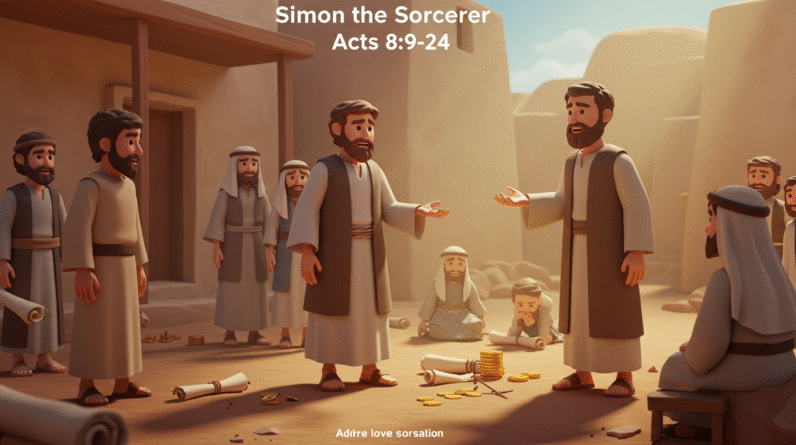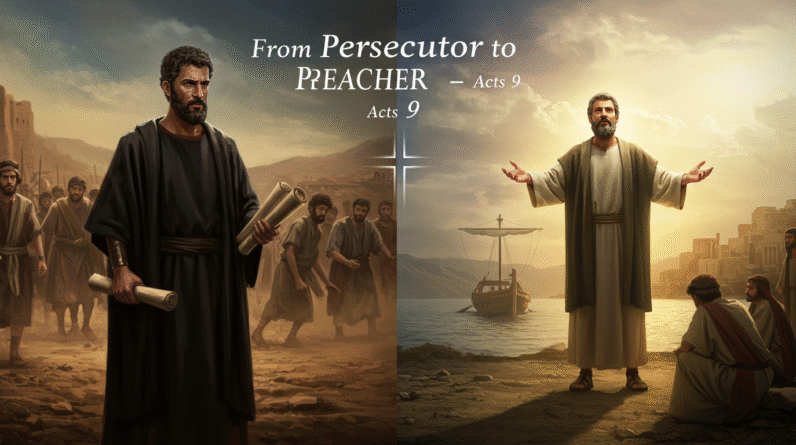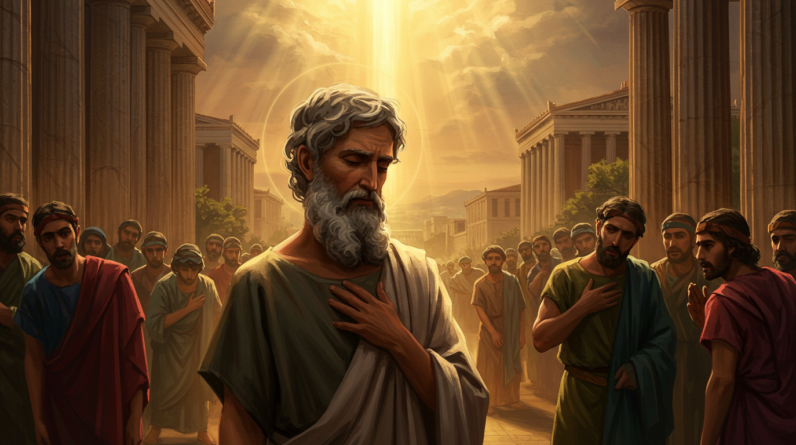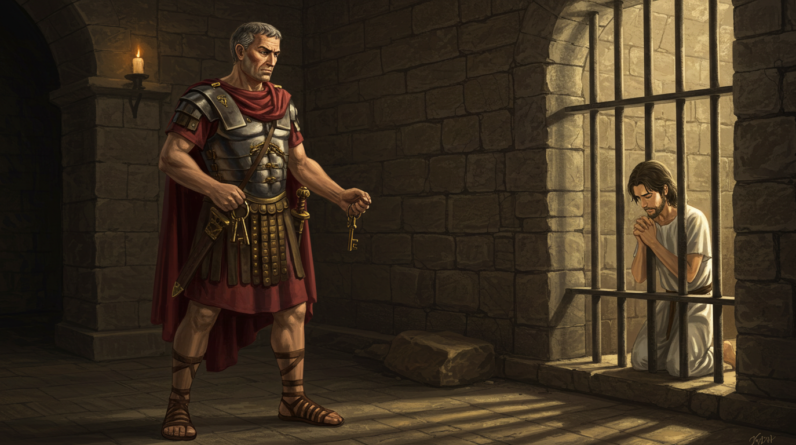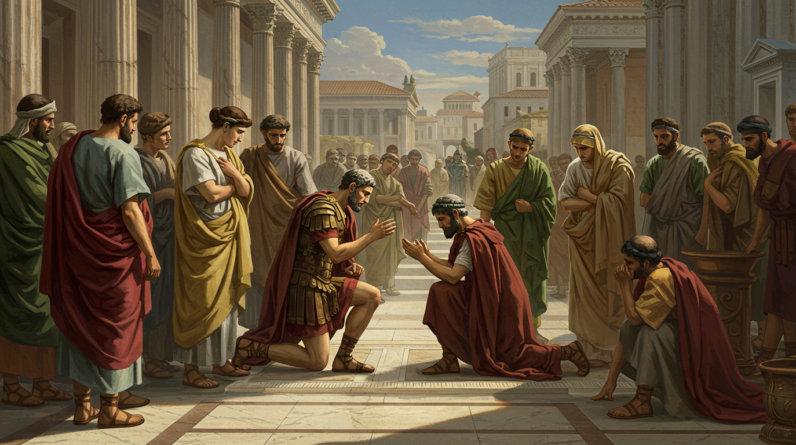Discover the divine transformation of Saul to Paul on the road to Damascus. Delve into the life-altering encounter and explore themes of grace and redemption.
Transformation of Saul to Paul: Encounter on the Road to Damascus
Introduction
Imagine this: a fierce opponent, a relentless persecutor, and a staunch defender of tradition. His name was Saul, and he was a man driven by an unyielding commitment to his beliefs, even if it meant pursuing a path of violence against the followers of Jesus. Before his remarkable transformation, Saul of Tarsus was a notorious figure within the Jewish community. He had established himself as an ardent protector of Jewish law, deeply opposed to the nascent Christian movement. This wasn’t just a casual disagreement with the teachings of Jesus; it was an intense hostility that manifested in actions most modern readers would find shocking.
Saul’s fervor against Christianity didn’t stem from a superficial understanding; it was born from a place of deep conviction. He perceived the teachings of Jesus and the actions of His followers as a direct threat to the law and traditions he held dear. Motivated by this belief, Saul’s actions included seeking approval from the high priest to imprison and punish anyone who aligned themselves with ‘The Way’—an early term for Christianity. Saul embarked on a mission to eliminate this perceived blasphemy and bring its proponents to heel, never imagining his own life was about to take an extraordinary turn.
The Encounter
The turning point in Saul’s life is among the most dramatic stories in the New Testament. It unfolded on a journey to Damascus, where Saul aimed to arrest followers of Jesus. However, everything changed during this fateful trip, leading to an encounter that would rewrite Saul’s destiny (Acts 9:3-6).
As Saul traveled along the road, a celestial light suddenly enveloped him, casting him into a state of divine disorientation. This light wasn’t just blinding in the literal sense; it pierced through the very fabric of his convictions and beliefs. Falling to the ground, Saul heard a voice—a voice that identified itself as none other than Jesus, the cornerstone of the gospel Saul was determined to destroy. “Saul, Saul, why do you persecute me?” questioned the voice, inquiring directly about Saul’s relentless pursuit against Jesus’ followers, as though prosecuting them was an assault on Jesus Himself.
In profound bewilderment, Saul asked, “Who are you, Lord?” to which the response came: “I am Jesus, whom you are persecuting.” This moment signified the crumbling of all Saul knew, propelling him into an existential crisis. Here was Saul, faced with an undeniable truth that the man he’d thought a blasphemer was indeed the living Lord. This encounter was inexplicable, yet it was rooted in reality—a paradox that demanded Saul’s attention and introspection.
The Turning Point
Left blinded by the divine light, Saul was led by his companions into Damascus, where he fell into three days of intense reflection and prayer. Deprived of sight, food, and drink, Saul was plunged into a state of vulnerability he had never known, during which every preconceived notion was challenged. This period was a crucible, one that purified Saul’s intentions and ignited within him a transformation—a concept given vivid meaning through the intervention of a disciple named Ananias (Acts 9:17).
Ananias, informed by a vision from the Lord, visited Saul and laid his hands upon him. “Brother Saul,” Ananias proclaimed, “the Lord—Jesus, who appeared to you on the road as you were coming here—has sent me so that you may see again and be filled with the Holy Spirit.” Instantly, something akin to scales fell from Saul’s eyes. He could see once more, but this vision extended beyond physical sight; for he now beheld the truth of the gospel with clarity.
The event symbolizes not only a physical healing but a pivotal spiritual awakening. Saul’s heart was transformed from stone to flesh, his zeal repurposed from persecution to propagation. His newly found faith reshaped his identity, giving rise to a willingness to suffer for the name he once sought to obliterate. This moment of transformation is a testament to the power of grace and truth to revolutionize even the most hardened hearts.
The Outcome
With a renewed spirit and clarity of purpose, Saul—who would later become known as Paul—embarked on a journey that redirected the course of early Christianity. Baptized and filled with the Holy Spirit, Saul’s ensuing actions were those of a man who bore witness to divine truth and sought to share it zealously (Acts 9:18-20).
He began to preach in the synagogues, boldly proclaiming Jesus as the Son of God, a stark contrast to his previous pursuits of condemnation and persecution. Saul’s transformation into Paul marked not only a personal evolution but an impact that resonated throughout the development of the early Church. Paul embraced his role as a missionary, authoring letters that would form the backbone of Christian doctrine for centuries to come.
As Paul, he traveled extensively, founding churches and extending the reach of Christianity far beyond the Jewish community. He engaged with diverse cultures, articulating the gospel that bridged divides and integrated diverse beliefs into a cohesive faith-centered community. His life exemplified radical change and unfaltering dedication, portraying the sacrifice and strength found in service to something greater than himself.

Key Lessons
The transformation of Saul to Paul spans more than the pages of scripture; it reverberates through the core of faith, redemption, and divine grace. From Saul’s story, you are reminded of the incredible power of personal transformation, a transformation that often occurs when you least expect it. No matter how intense one’s opposition to faith might be, the potential for change remains vast and boundless. Grace can penetrate the hardest of hearts, turning an adversary into an advocate—a lesson in hope and humility (2 Corinthians 5:17).
Beyond encouragement, Paul’s journey presents an invitation to consider your own spiritual journey. What beliefs hold you captive? Where might your conviction veer into rigidity? Transformation, as Paul’s life suggests, involves surrendering those rigid preconceptions in favor of an openness to grace, allowing for a profound recalibration of life’s meaning.
Moreover, this account speaks of the power of encounters—not only divine ones but the connections made with others. Ananias’s role in facilitating Saul’s healing showcases the importance of community, courage, and obedience. You might find a call to embrace opportunities to extend grace, play a transformative role in another’s life, and forge connections that lay the groundwork for growth and healing.
Conclusion
The story of Saul’s transformation into Paul resonates as a beacon of hope and testament to radical grace. It underscores the profound change possible through genuine encounters with truth and serves as a template for transformation relevant to each individual’s journey. As you reflect on this narrative, you’re encouraged to embrace the possibilities within your own life—where convictions might be challenged, where transformation may occur, and where your own unique chapter in the story of grace unfolds.
As a ClickBank Affiliate, I earn from qualifying purchases.
Acknowledgment: All Bible verses referenced in this article were accessed via Bible Gateway (or Bible Hub).



